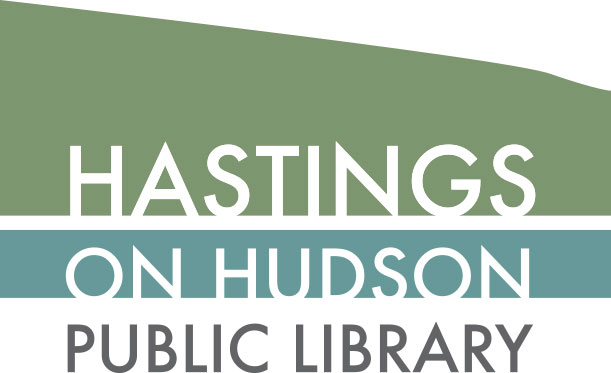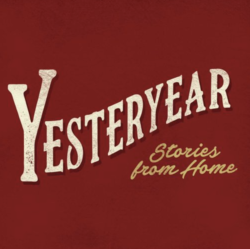Podcasts, Etc.
The Library would like to augment the digital resources widely
available to WLS patrons with original programming that is Hastings sourced and flavored. We look forward to highlighting projects generated by our village’s extensive creative community as it adapts technology and talent to reach an ever-wider audience.
Episode 1: Magic of Christmas Past
Published: December 20, 2020
Hastings-on-Hudson neighbor and prolific audiobook narrator Edoardo Ballerini reads “Magic of Christmas Past,” by long time Hastings resident Steve Zebrock. The piece appeared in the local paper in 1970, and it captures the spirit of the holiday season in the village a full half-century earlier. It comes courtesy of the Hastings Historical Society archives. Former mayor and trustee Lee Kinnally provides contextual commentary. Enjoy!
Episode 2: The Ziegfelds’ Girl
Published: February 11, 2021
Patty Ziegfeld recalls her 1920s childhood at Burkeley Crest estate, in Hastings-on-Hudson, New York.
She was the only child of Florenz Ziegfeld, impresario of the world renown Ziegfeld Follies, and his second wife, Billie Burke, best known for her role as Glinda the Good Witch from The Wizard of Oz. Among the exotic pets, the dollhouse styled after Mount Vernon, and the 1,000-piece dinner service from the Russian Imperial Court, it was indeed “Xanadu on Hudson.”
Natalie Barry, board president of the Hastings Historical Society, provides context.
Episode 3: A Dissertation on Golf
Published: April 9, 2021
Former Hastings-on-Hudson resident Eric Kothe reflects upon the summer of 1934, when he was nine and willing to get a little scrappy in the name of a dollar. After their travails selling baitfish to local crabbers, he and his friends come upon another money-making scheme at Saint Andrew’s Golf Club.
Ed Herbstman reads and Saint Andrew’s club historian Bruce Clark offers context.
Episode 4: Kitty’s Story
Published: July 1, 2021
This episode features excerpts from an interview with Kitty Rapoli Brown, given by Christine Hewitt. Brown was born in 1907 of Hungarian immigrants. Her father worked at the National Conduit and Cable Mill for 35 years, in 12-hour shifts, five-and-a-half days a week; her mother worked as a laundress and a cleaning maid. They heated their home with leftover wood and bought their flour and onions in large sacks; they also went to the dance hall, played in marching bands, and sat around for long storytelling sessions. As Brown recalls, “We had no poor people in Hastings then. We were all the same.”
Beth McDonald Wyman reads Brown’s account and Village Historian of Hastings-on-Hudson, Sue Smith, provides context on immigrant history.
Episode 5: The Whistleblower
Published: September 20, 2021
This episode features two accounts that center the vitality of the Hudson River. The first comes from Paul Hanak, a Hastings resident from 1925 to 1987, and known as one of the river’s most prolific swimmers. By the late 60s, though, pollutants from Zinsser Chemical and Anaconda Wire and Cable had turned the water purple, yellow, and green. Our second account comes from Fred Danback, who worked as a janitor and union president for Anaconda before deciding to give his life to fighting this pollution. His suit, when settled in 1972, marked the largest reward money ever obtained by a conservation group.
Dan Shapley, Interim VP of Programs & Interim Hudson Riverkeeper, provides context.
Episode 6: The Legend of Sleepy Hollow
Published: October 23, 2021
In a tumble of scenes set here on the banks of the Lower Hudson Valley, Irving animates the romantic, the longing, and the American moments that form this notoriously inconclusive tale. Perhaps at the other end, you’ll have some questions, like we did: What is all this humor doing in such a sad tale? Where do our sympathies lie with the hardworking, greedy Ichabod Crane? Who can be trusted? What in the Dickens happens at the end?
Our co-producer Edoardo Ballerini reads; Jonathan Kruk, The Legend of Sleepy Hollow Storyteller, provides context.
Episode 7: Quarry Park
Published: September 26, 2022
In this installment, we explore the history of Quarry Park, a 5.5-acre parcel of land that has undergone a surprising number of very dramatic changes over the last 150 years – from a flourishing marble quarry to a majestic park to an unsightly landfill and back to a beautiful space for the public to enjoy. We draw from The Hastings Historian, Daniel Ellsberg’s memoir, The Doomsday Machine, and a first-hand account from John Flack, who was instrumental in creating the park as it is today.


